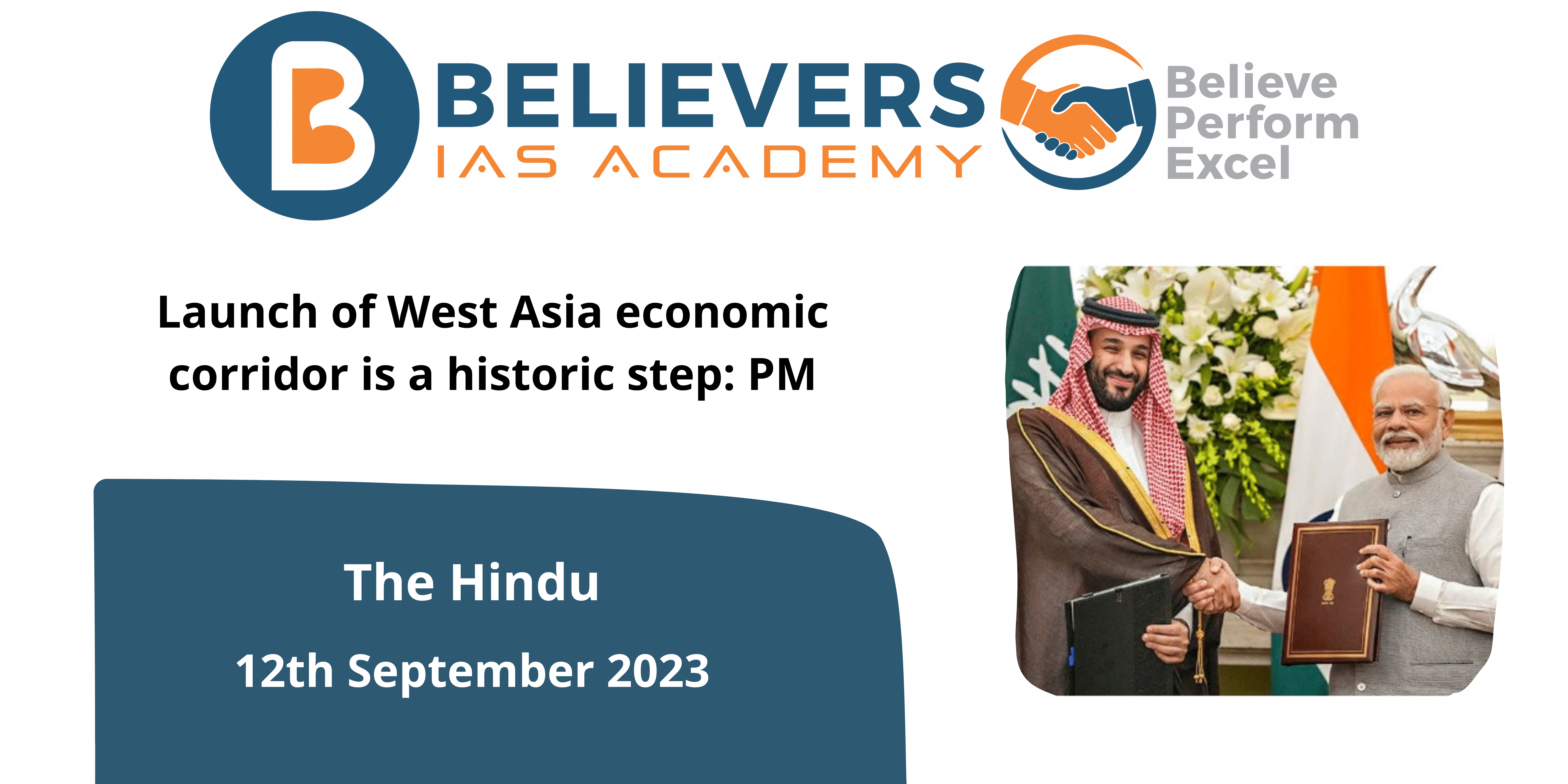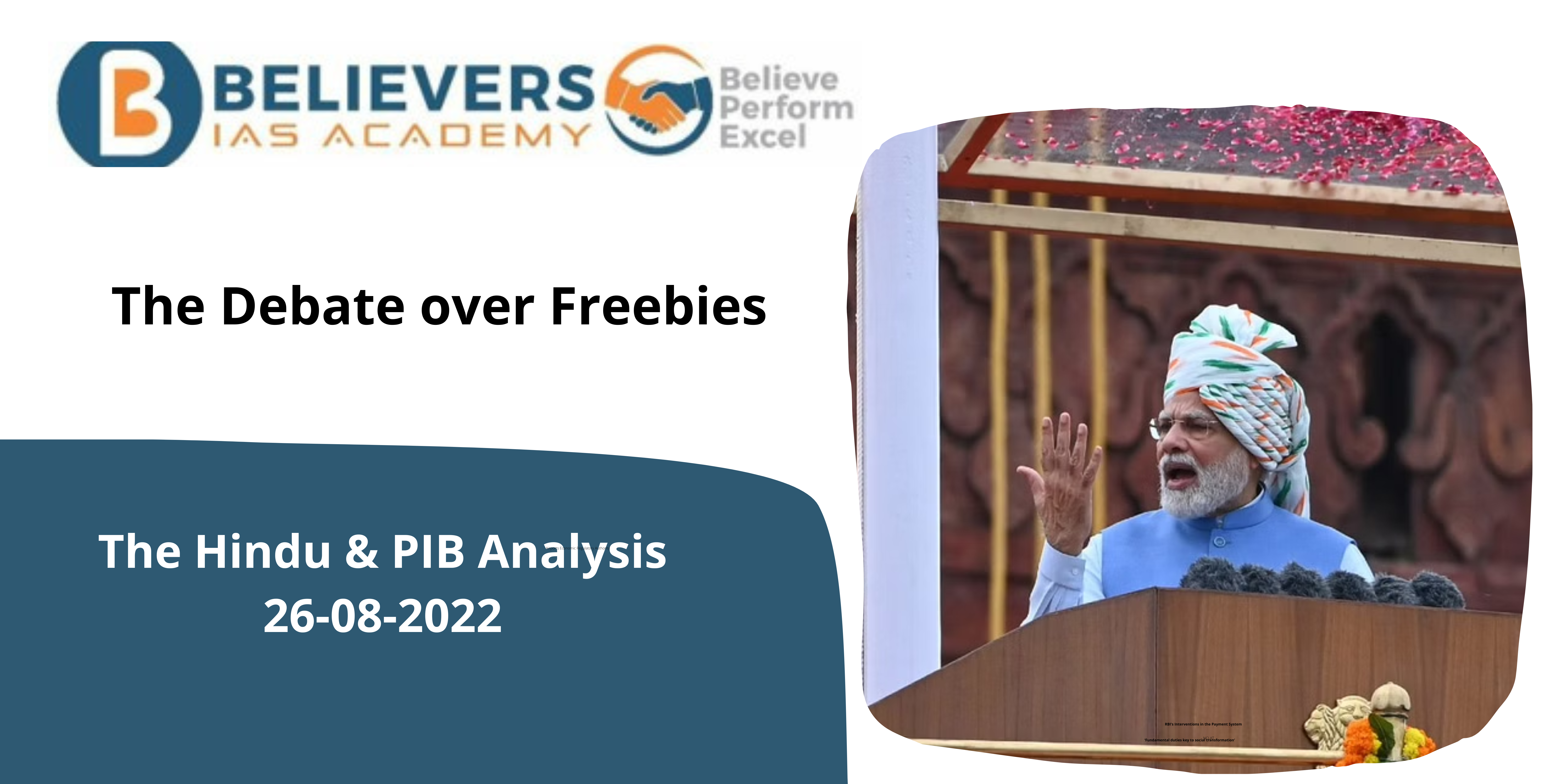Launch of West Asia economic corridor is a historic step: PM
Context
Two days after the launch of the India-Middle East-Europe Economic Corridor, Prime Minister Narendra Modi on Monday described Saudi Arabia as “one of the most important strategic partners of India”.
What is the India-West Asia-Europe Corridor?
- An infrastructure initiative called the India-West Asia-Europe Corridor seeks to build a railroad and port system to link Asia and Europe. India, the US, Saudi Arabia, the United Arab Emirates, Europe, and Japan are all involved in the project. The corridor is anticipated to improve connectivity and economic development between Asia, the Arabian Gulf, and Europe.
- In the post-pandemic environment, the corridor is seen as an alternate supply chain route. Travel between India, the Middle East, and Europe is predicted to be 40% faster as a result. A railway line in West Asia is also a part of the project, allowing for the installation of cables for internet, energy, and a pipeline for pure hydrogen.
- At the G20 Summit in New Delhi, Prime Minister Narendra Modi revealed the corridor. The event was also attended by US Vice President Joe Biden and Saudi Arabian Prime Minister Mohammed bin Salman.
- An alternative to China’s Belt and Road Initiative (BRI) is offered by the corridor. Additionally, it aims to allay worries about nations getting caught in a debt cycle.
What is the purpose of the Joint Taskforce?
- India and Saudi Arabia decided to create a joint task force during the visit to advance the West Coast refinery project. ARAMCO, ADNOC, and an Indian corporation are all involved in this project, which has $50 billion already set aside for it.
- Additionally, the two parties talked about locating and allocating the $100 billion in investments Saudi Arabia promised, part of which is designated for the refinery.
Which are the areas where India and Saudi Arabia will jointly cooperate?
- Renewable Energy, Energy Efficiency, Hydrogen, Electricity and Grid Interconnection between the two countries, Petroleum, Natural Gas, Strategic Petroleum Reserves and Energy Security.
- Encouraging bilateral investment in the field of Renewable Energy, Electricity, Hydrogen and Storage; and Oil & Gas.
- Circular Economy and its technologies to reduce the effects of climate change, such as carbon capture, utilization and storage.
- Promoting digital transformation, innovation cyber-security and artificial intelligence in the field of Energy.
- Working on developing qualitative partnerships between the two countries to localize materials, products and services related to all sectors of energy, supply chains and technologies.
- Strengthening the cooperation with companies specialized in the field of energy.
- Any other fields related to the energy field that the two countries agree upon.
What is the significance of the meeting?
- The visit is noteworthy since it took place after Saudi Arabia and Iran reached a peace agreement that stopped hostilities. In addition, Saudi Arabia joined the BRICS organization at a Johannesburg meeting. These changes are a reflection of the shifting global dynamics, in which Saudi Arabia and India play major roles.
What are the other areas where decisions have been made?
- Energy Partnership: The two nations declared their intention to transform their existing energy relations into a “comprehensive energy partnership.”
- Oil Supplies: Saudi Arabia gave India its word that it would continue to be a “reliable partner and exporter of crude oil supplies.”
- Collaboration in the Private Sector: The joint statement placed a strong emphasis on the development of the private sector in both nations as well as the possibilities for investment partnerships in the agriculture and food sectors.
What are the possible challenges for the grouping?
- Geopolitical Complexities: The area spanned by the cooperation and corridor is complicated from a geopolitical standpoint. It comprises nations with long-standing tensions and rivalries, such as Saudi Arabia Iran India and Pakistan. It can be difficult to manage these issues while promoting economic cooperation.
- Security Issues: The area is vulnerable to security issues including terrorism and political unrest. It can be difficult to guarantee the security of investments and infrastructure.
- Economic Disparities: The nations along the corridor have wide-ranging economic differences. It can be difficult to close these discrepancies so that each member receives fair rewards.
- Development of infrastructure: It can be expensive and time-consuming to build the corridor’s essential infrastructure, including its transportation and logistics networks. Coordination between numerous nations is crucial.
- Administrative and Regulatory Obstacles: The regulatory and administrative processes differ between nations. It can be difficult to harmonize these for investment and trade.
Conclusion
With agreements and conversations across a wide variety of industries and areas of cooperation, Crown Prince Mohammed Bin Salman’s visit represented an important milestone in deepening the strategic alliance between India and Saudi Arabia.




